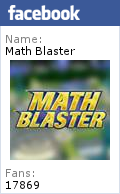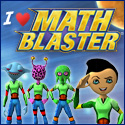The moon has been the subject of many different scientific experiments throughout the years. Now, Russia is making plans to do further research on the moon by sending an unmanned spacecraft in 2015. The Russian Space Agency said that they would be launching a space exploration vehicle that weighs about 1,100 pounds. To add on to this load, the spacecraft will be carrying over 50 pounds of equipment so that scientific experiments can be held. This spacecraft’s main goal will be to take soil samples and search for sources of water on the moon. Moreover, this expedition to the moon is significant to the Russian Space Agency because its last unmanned flight to the moon was in 1976.
These events bring a particular period in history to light — the Space Race. In short, the Space Race was a competition for space exploration supremacy between the Soviet Union and the United States. This “competition” developed during the Cold War between the years 1957 and 1975. The Space Race’s main focuses were in developing and launching artificial satellites, conducting human spaceflight around our earth, and sending spacecrafts on trips to the moon.
All of the technologies that were being developed at this time were centered around a couple of key goals: to attain technological superiority and reaffirm national security. The Space Race began at a neck-and-neck pace; the United States and the Soviet Union started off the Space Race with public announcements about launching satellites into space. These announcements were made within a couple of days of each other in 1955, which makes it clear that a type of “competition” or “race” had begun.
One of the key concerns that were sparked by the Space Race was international peace and national security. For instance, with satellites and spacecrafts flying overhead, President Eisenhower was concerned that the Soviet Union would claim that their national airspace was being breached. These concerns, among others, were just an example of the type of competition that was developing through the Space Race.
The Space Race effectively concluded in 1975, when the United States and Soviet Union cooperated in a human spaceflight mission entitled the Apollo-Soyuz Test Project. Although the Space Race seems to have been purely about the nations besting each other in technological and scientific exploits, this is not the case. In fact, the Space Race led to different advances in education, research, and environmental movements.
Though the Space Race is a thing of the past, we can look to the events which took place during this time and applaud those who pioneered many of the technologies that our nations use today. Do these types of historic and scientific facts get your Blasters’ brains buzzing with what they could do in the science world when they grow up? Tell us what you think about this article, and let us know about your questions and comments!
Filed under: Current Events, Just for Fun, Newsletter, Parents and Kids, Science Facts, Uncategorized | Tagged: Fun facts, Science facts, Space News | 1 Comment »












